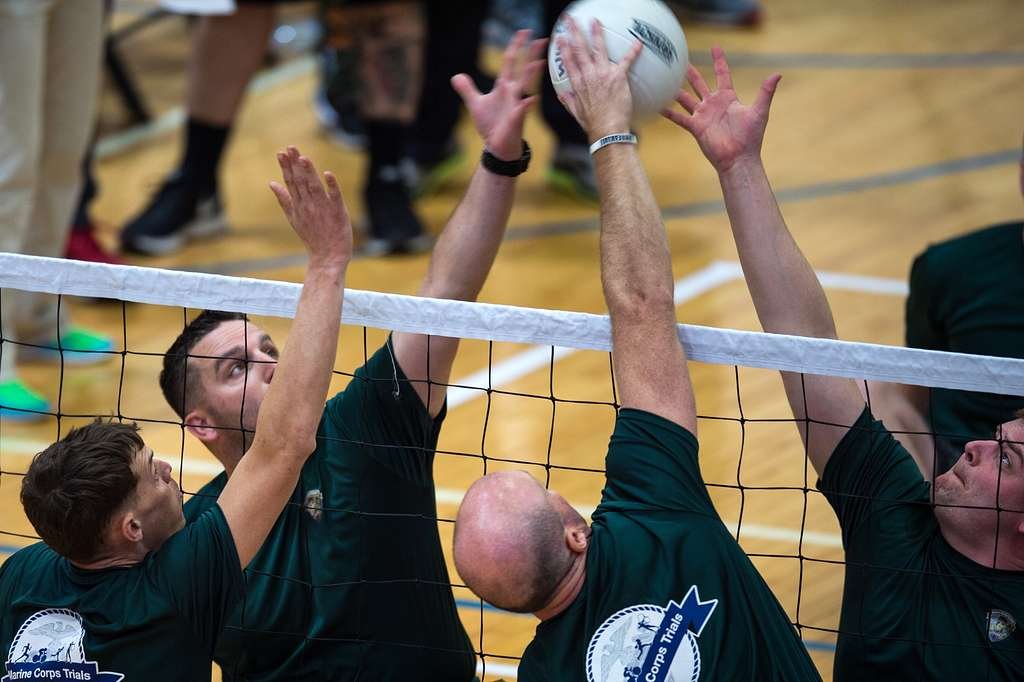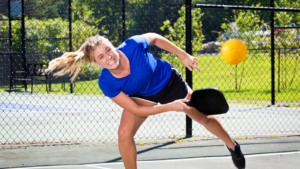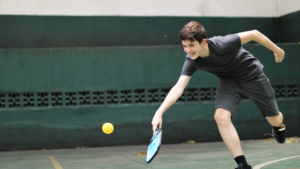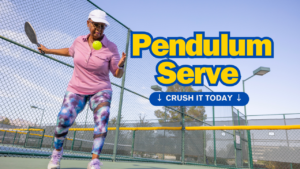Imagine the blissful sound of a paddle striking a plastic ball, followed by the joyful cries of both camaraderie and competition reverberating across a spacious court. Welcome to the world of pickleball, a delightful blend of tennis, badminton, and ping-pong that has captured the hearts of millions globally. As the popularity of this rapidly growing sport continues to soar, it is essential for players to familiarize themselves with the nuances of pickleball etiquette. In this guide, we will delve into the art of serving in pickleball, ensuring that you master the art of starting a rally without shattering any rulebooks along the way. Get ready to serve up some excitement, as we explore the fundamentals of pickleball serving prowess.
Table of Contents
- Introduction: Understanding the Basics of Pickleball Serving
- Key Rules: Unraveling SERVE Faults and Missteps
- Perfecting Your Serve: Expert Techniques for Consistency
- Common Mistakes to Avoid: Pitfalls in Legal Pickleball Serving
- Pro-Tips from the Pros: Strategies for Mastering Pickleball Serves
- Q&A
- To Wrap It Up

Introduction: Understanding the Basics of Pickleball Serving
Understanding the Basics of Pickleball Serving
Welcome to the world of pickleball! If you’re new to this energetic sport, understanding the basics of pickleball serving is a great place to start. Whether you’re a beginner or looking to brush up on your skills, mastering the art of serving will set the foundation for a successful game.
First and foremost, let’s clarify the objective of serving in pickleball. The serve is the starting shot that initiates each rally, and it’s crucial to grasp the rules and techniques to gain an advantage over your opponents. In pickleball, the serve must be underhand and made diagonally cross-court to the opposite service area. Unlike other racquet sports, you only have one attempt to serve the ball directly into the service box.
In pickleball serving, precision and strategy are key. Understanding the different types of serves and developing a variety of techniques will help you keep your opponents guessing and give you the upper hand. Whether you opt for a powerful drive serve to take control of the point or a soft lob serve to disrupt your opponent’s rhythm, mastering the art of the serve is essential in becoming a formidable pickleball player.

Key Rules: Unraveling SERVE Faults and Missteps
Mastering the art of serving is crucial for any tennis player. To avoid faults and missteps while executing a serve, it’s important to follow some key rules. These rules will help you improve your serve and minimize errors on the court.
Here are some key rules to keep in mind:
- 1. Proper Grip: Start with a strong grip on the racket, utilizing the Eastern or Continental grip. This grip will offer better control and power when you strike the ball.
- 2. Consistent Ball Toss: The ball toss plays a crucial role in a successful serve. Practice a consistent toss to ensure accurate timing and placement.
- 3. Correct Stance: Utilize a wide, balanced stance by placing one foot slightly ahead of the other. This stable position will provide a solid foundation for generating power and maintaining control.
- 4. Smooth Motion: Execute a fluid motion while swinging the racket, allowing for a smooth transfer of power. Avoid jerky movements or rushing through the serve.
- 5. Follow-through: Don’t neglect the follow-through after hitting the ball. A proper follow-through includes swinging the racket across your body and maintaining balance.
By adhering to these key rules, you’ll be on your way to unraveling serve faults and missteps. Remember, practice makes perfect, so keep refining your serve technique and watch your game improve!

Perfecting Your Serve: Expert Techniques for Consistency
Mastering Your Serve: Pro Strategies for Unswerving Accuracy
When it comes to serving in tennis, consistency is key. Whether you’re a beginner or a seasoned player, honing your serve technique can greatly enhance your overall performance on the court. To help you perfect your serve, we’ve gathered expert tips and techniques that will take your game to the next level.
1. Focus on your grip: A proper grip is the foundation of a reliable serve. Experiment with different grips, such as the Eastern, Continental, or Semi-Western, to find the one that feels most comfortable and gives you optimal control.
2. Develop a fluid motion: A smooth and fluid motion is essential for a consistent serve. Practice your toss to ensure it’s in the right spot and then work on a seamless swing, keeping your body and arms synchronized throughout.
3. Find the right stance: Your stance sets the stage for a powerful serve. Experiment with the platform stance, where your feet are parallel, or the pinpoint stance, where you start with your back foot positioned sideways and your front foot pointed towards the net. Adjust your positioning until you find what works best for you.
4. Maintain a consistent toss: A reliable toss is key to a consistent serve. Practice tossing the ball consistently to the same spot, slightly in front and above your hitting shoulder, allowing you to make solid contact and generate maximum power.
Remember, mastering your serve takes time and practice. Incorporate these techniques into your training routine, and before you know it, you’ll have a serve that can rival the best in the game!

Common Mistakes to Avoid: Pitfalls in Legal Pickleball Serving
When it comes to pickleball, serving is a crucial aspect of the game that can make or break your chances of winning a point. However, even seasoned players can fall victim to certain pitfalls that can result in costly mistakes. To help you improve your serving technique and avoid these common errors, we have compiled a list of key pitfalls to be aware of:
- Foot Faults: One of the most common mistakes in pickleball serving is committing a foot fault. Players often unknowingly step on or over the baseline before making contact with the ball, resulting in a fault. It is essential to ensure that both feet remain behind the baseline until the ball is struck to ensure a legal and valid serve.
- Service Toss: Another critical factor in serving is the toss. Many players struggle with inconsistent tosses, leading to errors in their serves. A good toss sets the stage for a successful strike, so it’s crucial to practice maintaining a consistent and controlled toss to avoid mishits.
- Let Serves: While let serves are allowed in some forms of tennis, they are not allowed in pickleball. Players often forget this distinction and end up unintentionally hitting a let serve, resulting in a fault. It is essential to be aware of this difference and avoid attempting let serves in pickleball.
By being mindful of these common pitfalls, you can fine-tune your serving technique and minimize errors on the pickleball court. Remember, practice and consistency are key to mastering the art of serving and ultimately improving your overall gameplay.
Pro-Tips from the Pros: Strategies for Mastering Pickleball Serves
Stepping onto the pickleball court means you’re ready to take your game to the next level. And what better way to start than by mastering the art of pickleball serves? We’ve gathered some valuable pro-tips to help you ace your serves and dominate the court.
1. Find Your Grip and Stance
Before serving, it’s crucial to establish a strong grip and stance. Hold the paddle with a firm (but not tense) grip, ensuring your fingers wrap around the handle comfortably. For a standard serve, position your feet shoulder-width apart, parallel to the baseline. A balanced and stable stance is key to launching a powerful and accurate serve.
2. Mix Up Your Speed and Placement
To keep your opponents guessing, vary the speed and placement of your serves. Add some finesse by using drop shots or slice serves to catch your opponents off guard. Remember, consistency is crucial, so practice different serves until you find a variety that works best for you.
3. Incorporate Spin
The best serves incorporate spin to maximize their effectiveness. Experiment with topspin, backspin, or sidespin to create unpredictable bounces and make return shots challenging for your opponents. By adding spin to your serves, you’ll be able to put your opponents on the defensive right from the start.
Q&A
What is the proper way to serve in pickleball?
To serve in pickleball, the player must have both feet behind the baseline and make an underhand shot. The paddle must move below the waist and contact the ball below the waist as well.
Can I use a “hard serve” or overhead serve in pickleball?
No, pickleball rules state that all serves must be made underhand. Using an overhead serve or putting excessive power behind your serve is against the rules.
Is it allowed to step on or over the baseline when serving?
Stepping on or over the baseline while serving is not permitted in pickleball. Players must keep both feet behind the baseline until they make contact with the ball.
Can I aim for a specific part of the court when serving?
Yes, you can aim for any area of the court while serving in pickleball. Just ensure that the serve is made diagonally and lands within the service-court on the other side of the net.
What happens if my serve hits the net but still lands in the proper service-court?
If your serve hits the net but lands in the correct service-court, it is called a “let serve.” In this case, you get a second opportunity to serve without any penalties or loss of point.
To Wrap It Up
And that’s a wrap, fellow pickleball enthusiasts! We hope this exhilarating journey through the ins and outs of serving in pickleball has left you feeling confident, informed, and ready to conquer the courts without breaking a single rule. Remember, mastering the art of serving is more than just a strategic advantage; it’s a testament to your commitment to fair play and sportsmanship.
As you step onto the pickleball court next time, armed with your newfound knowledge, let the tension build in the air. Feel the paddle in your hand, its weight becoming an extension of your own arm. Visualize the perfect arc, the split-second precision, as you execute the flawless serve. Listen to the satisfying ‘pop’ as your paddle connects with the ball, launching it over to the opposing court, leaving your opponents stunned and scrambling.
But above all, remember the spirit of the game. Cherish the camaraderie and the bonding moments shared with your partners and opponents alike. Pickleball isn’t just about serving a ball across a net; it’s about building connections, creating memories, and embracing a sense of community.
So, whether you’re a novice looking to dip your toes into the pickleball realm or a seasoned player seeking perfection, always keep in mind the rules that govern this incredible sport. With precision, grace, and a dash of creativity, you’ll serve your way to victory while inspiring generations of pickleball players to come.
Now, go out there and serve up a storm, my fellow pickleball aficionados. Embrace the thrill, the challenge, and the incredible bond that this unique sport offers. Remember, it’s not just about hitting the ball, but about embracing the camaraderie and cherishing the moments that make pickleball so much more than just a game. Stay true to the rules, and let your serve become a testament to your unwavering passion for this remarkable sport. Game on!
As an affiliate, my content may feature links to products I personally use and recommend. By taking action, like subscribing or making a purchase, you’ll be supporting my work and fueling my taco cravings at the same time. Win-win, right?
Want to read more? Check out our Affiliate Disclosure page.




